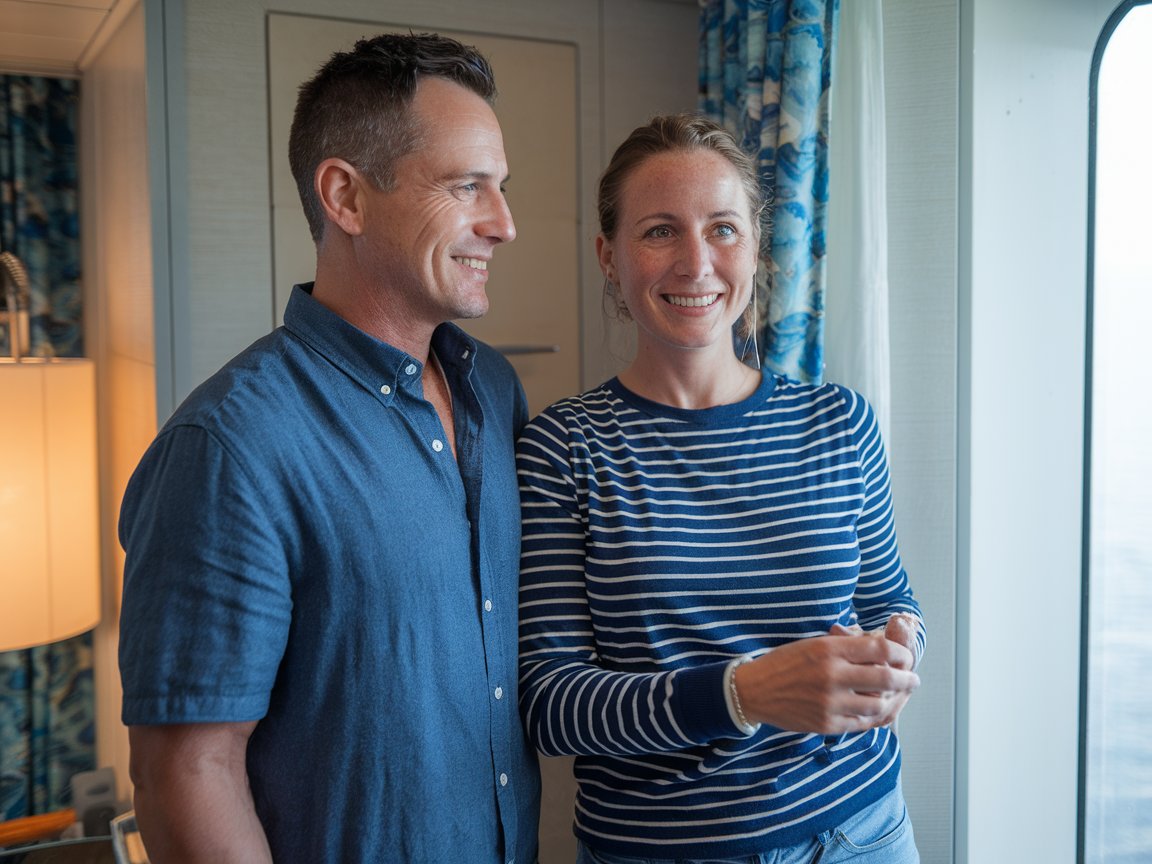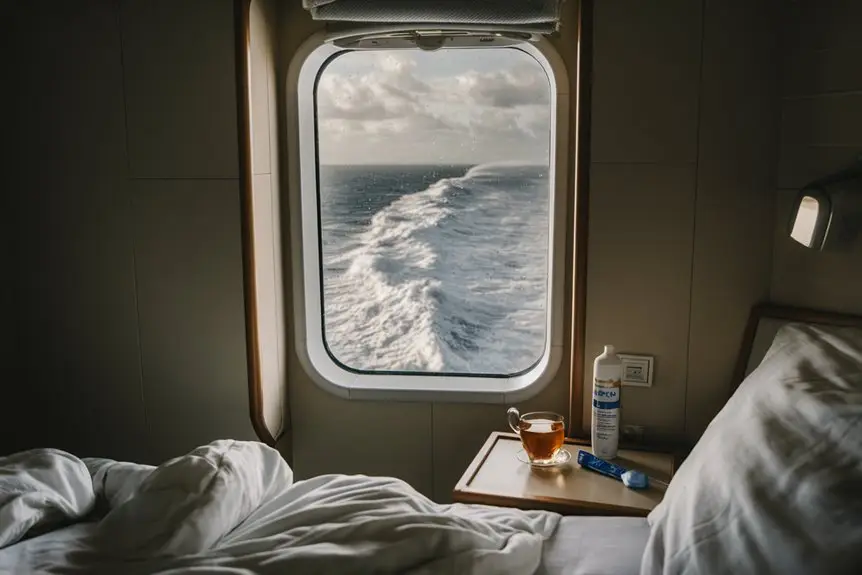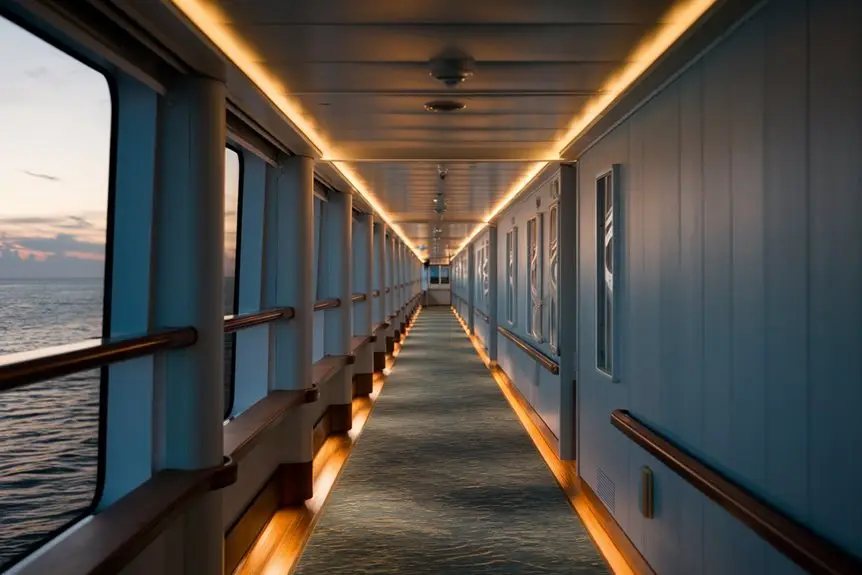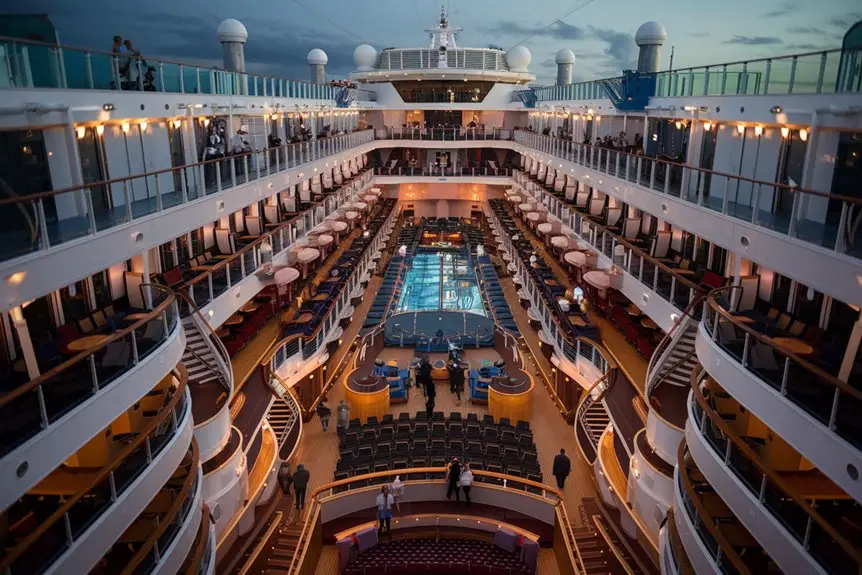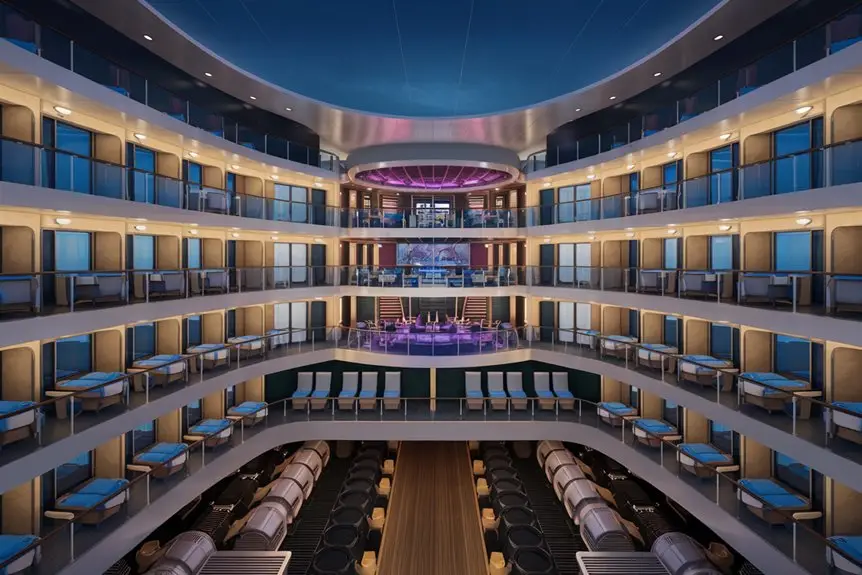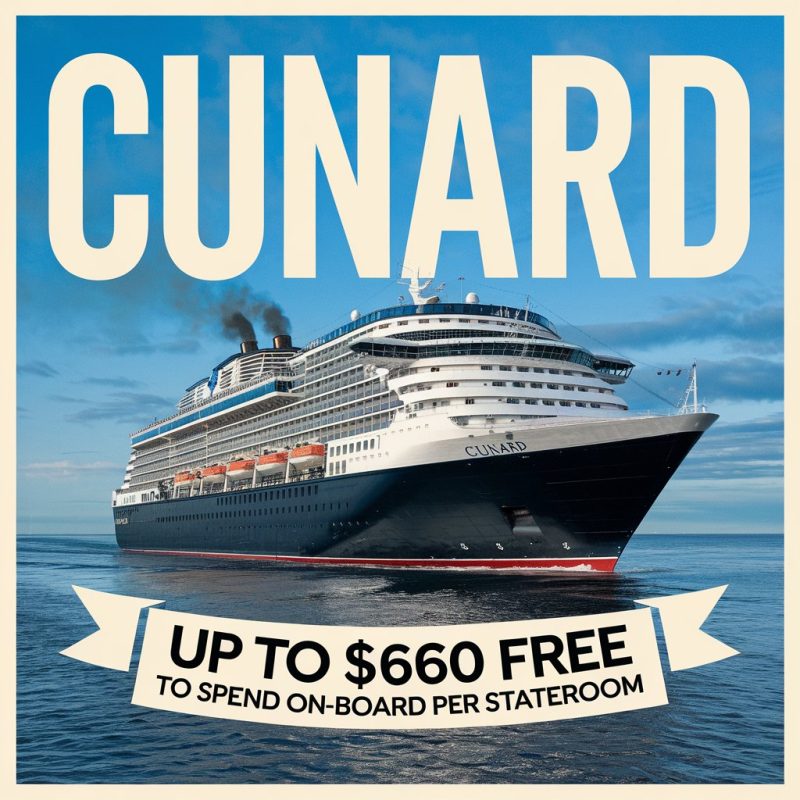The perfect cruise starts with choosing the right cabin location. Your cabin’s position affects your entire holiday experience, from sleep quality to motion comfort. Noise levels vary significantly across the ship – cabins near nightclubs, lifts, or entertainment venues often experience more disruption.
The ship’s movement also differs by location; mid-ship cabins offer the most stability, while front and rear cabins feel more motion in rough seas.
Smart cabin selection helps you avoid common issues:
- Mid-ship cabins minimise movement
- Lower decks provide better stability
- Cabins away from public areas ensure quieter nights
- Locations far from service areas reduce staff noise
- Distance from lifts prevents foot traffic sounds
Your cabin choice impacts:
- Sleep quality
- Motion sickness risk
- Overall comfort
- Ease of movement around the ship
- Holiday enjoyment
Check the deck plan before booking to spot potential noise sources or movement hotspots. The right cabin location turns a good cruise into a brilliant one.
Best Cabin Locations for Your Cruise Experience
Stability and Comfort:
- Middle-deck cabins offer the steadiest ride and help prevent seasickness
- Lower decks and inside cabins feel less movement from waves
- Your body adjusts better to ship motion in centrally-placed rooms
Quiet Spots:
- Skip cabins next to lifts and stairwells
- Stay away from bars, pools and staff areas
- Choose rooms far from late-night venues
Smart Positioning:
- Central cabins put you close to restaurants and shops
- Mid-ship locations mean shorter walks to activities
- You’ll find peaceful areas away from busy decks
Cabin Features:
- Balcony cabins give you fresh sea air and daylight
- Outside views help reduce motion discomfort
- Fresh air access makes seasickness less likely
Deck Choices:
- Top decks give amazing views but rock more
- Lower decks sail smoothly but have limited views
- Middle decks balance good views with stability
Choosing Your Best Cruise Cabin
Location, comfort and accessibility drive your perfect cabin choice. Central cabins on lower decks offer the most stability and less movement at sea. Cabins surrounded by other cabins shield you from noise better than those near public spaces.
Your daily habits shape where you’ll feel most at home. Midship cabins put you close to pools and entertainment areas. Cabins near lifts make ship exploration easier if you have mobility needs.
Upper deck cabins suit sun-lovers, whilst quiet interior cabins work best for those seeking peace.
Check the deck plans and match your cabin to your cruise route. A well-chosen spot makes your holiday more enjoyable.
Things to remember:
- Central location = more stability
- Lower deck = less movement
- Mid-ship = near activities
- Upper deck = sun access
- Interior cabins = quieter stays
These clear-cut choices help you book the right cabin for your needs.
The Best Ways to Beat Seasickness on Cruises
Mid-ship cabins on lower decks offer the steadiest experience at sea. These locations feel less movement from waves compared to other areas.
The front and back cabins experience more rolling and pitching, making seasickness more likely.
Windows and balconies help your body adapt to ship movements. Your brain processes the horizon line better when you can see outside, reducing motion sickness.
Fresh air from balconies provides additional comfort.
Large modern ships with stabilisers minimise motion significantly. Royal Caribbean’s Quantum-class ships demonstrate excellent stability through advanced technology.
Simple steps reduce seasickness risk:
- Book during calmer seasons
- Choose routes through protected waters
- Use pressure point wristbands
- Try ginger-based remedies
The combination of a well-chosen cabin and these preventive measures helps ensure a more comfortable voyage.
Quiet Spots on Your Cruise Ship
Your cabin’s location determines how peaceful your cruise experience will be. Noisy areas sit below pool decks, fitness centres and sports courts, where morning activities start early. Elevators, casinos and nightclubs also create unwanted noise.
The quietest cabins lie in the middle of the ship between other passenger rooms on lower decks. These spots give you better sound protection and fewer disruptions.
Check the deck plans carefully before choosing your room. Look for these potential noise sources:
- Crew work areas
- Toilet system machinery
- Cabins with connecting doors
The best rooms offer a peaceful space away from busy areas. Your cabin should feel like a calm retreat where you can properly rest and relax.
Distance To Ship Amenities
Your cabin’s location impacts your daily cruise experience. Midship cabins give you easy access to most facilities. You can reach dining rooms, theatres and social areas quickly from these central spots.
Upper-deck cabins work best if you love swimming and sunbathing. The pool and sun decks sit just steps away from your door.
Spa and gym users should pick cabins near the wellness areas. This choice saves walking time and helps you stick to your fitness routine.
Guests with mobility needs benefit from cabins near lifts. These locations reduce walking distances to essential areas.
Groups should consider cabins near the main lobby. This makes meeting up and coordinating activities simpler.
Remember these trade-offs:
- Cabins near service areas might get noisy
- Rooms below pool decks can hear early morning deck cleaning
- The most convenient locations often cost more
Choose your cabin based on which amenities you’ll use most often. This makes your cruise more enjoyable and saves time moving around the ship.
Best Ocean Views on Cruise Ships
Corner aft cabins give you the biggest balconies with stunning wraparound sea views. You’ll have space for sun loungers and outdoor dining sets.
Midship hump cabins offer wider-than-normal balconies where the ship curves outward, creating more room to relax.
High-deck suites deliver the most impressive views. These rooms combine spacious private balconies with luxury features and separate living areas. The extra cost brings clear, open-sea panoramas from your personal space.
Remember: Higher decks feel more ship movement. If you get seasick easily, choose a midship cabin where the motion is gentler.
Smart tip: Book early to secure these popular viewing spots – they sell out quickly.
Room Types And Deck Levels
Interior cabins provide budget-friendly rooms without windows in the ship’s centre.
Ocean-view cabins feature windows with sea views.
Balcony rooms offer your own outdoor space, with larger balconies at the ship’s back.
Suites give you the most space and top-tier amenities.
Deck Locations:
The deck you choose affects your cruise experience.
Lower decks feel steadier and suit passengers who get seasick.
Upper decks have better views but move more in rough seas.
Mid-ship cabins offer the most stable position on any deck level.
Smart Cabin Choices:
Avoid booking near busy areas like pools and bars if you want quiet.
Engine noise travels more in back cabins on lower decks.
Pick your location based on what matters most to you – whether it’s peace and quiet, easy access to facilities, or minimal movement.
Frequently Asked Questions
Can I Switch Cabins During the Cruise if I’m Unhappy With My Location?
You can request a cabin change during your cruise by visiting the guest services desk. Each cruise line handles room changes differently, and success depends on these key factors:
- Available empty cabins
- Your current booking type
- Timing of your request
- Ship’s occupancy level
The best time to ask for a change is early in the cruise when more cabins might be empty. Guest services will try to help, but they cannot guarantee a switch. Some cruise lines may charge a small fee for cabin changes.
How Do Cabin Prices Fluctuate Between Different Sailing Seasons and Destinations?
Balcony cabin prices typically exceed interior cabin rates by 50-75% throughout the year. Summer and autumn months, especially June and November, show the largest price differences.
Alaska cruises have the most significant price gap, with balcony cabins costing nearly double the interior options. Longer cruises create wider price differences between cabin types, as passengers spend more time in their rooms.
Are Connecting Cabins Soundproof Between Each Other?
Connecting cruise cabins offer limited sound isolation. Noise travels easily through the connecting doors and shared walls between cabins. You can hear conversations, TV sounds and general movement from your neighbouring cabin.
Independent travellers should choose non-connecting cabins for better privacy. Book connecting cabins only when travelling with family or friends who occupy the adjacent room.
Do Guarantee Cabins Typically End up in Less Desirable Locations?
Guarantee cabins often come with location trade-offs. These cabins typically sit near busy areas, lift shafts, or the ship’s outer edges. Passengers might experience more ship movement and noise in these spots.
The booking system works similarly to last-minute hotel deals, where prime locations aren’t usually available. Still, many travellers find the lower price worth the less ideal placement.
What Happens if Mechanical Issues Affect My Cabin During the Cruise?
The cruise line will move you to another cabin if mechanical problems affect your room. You can expect either a new room of similar quality or an upgrade to a better cabin. Many cruise lines offer refunds or onboard credits as compensation. The amount depends on how serious the issue is and how long it lasts.
Common mechanical issues include air conditioning faults, plumbing problems or electrical issues. The ship’s maintenance team will first try to fix the problem quickly, but your comfort and safety remain the priority.
More Info On Cruise Cabins
Here are some more of our cruise cabin guides to help you find the right one, no matter which cruise you’re going on:




